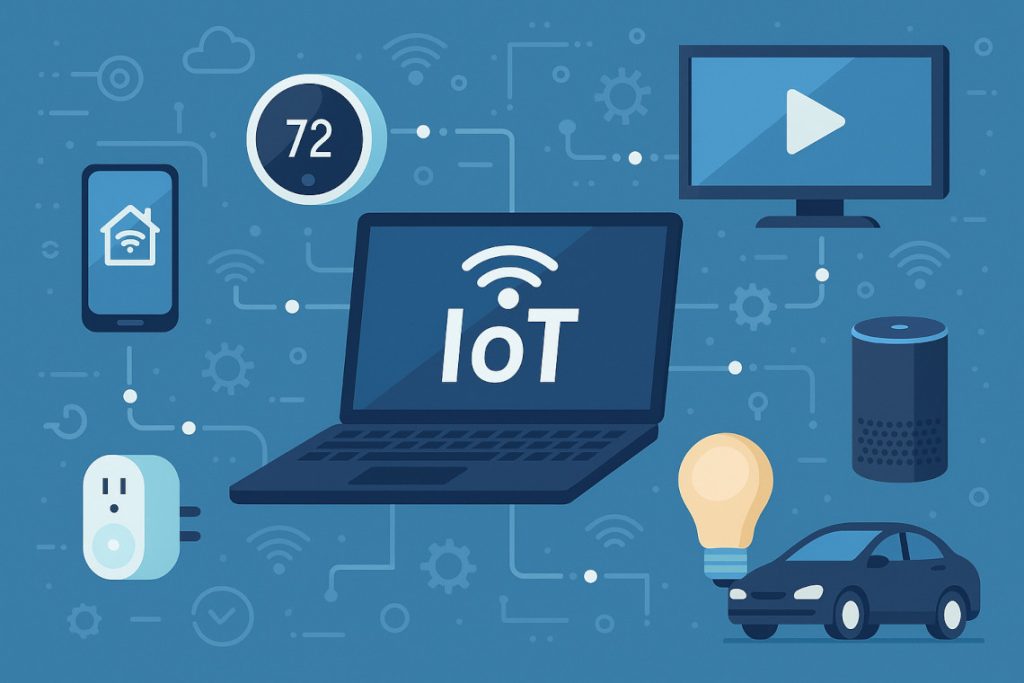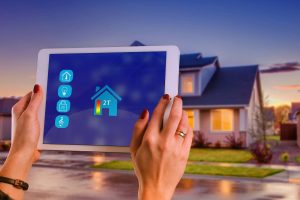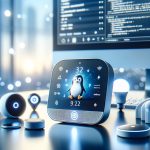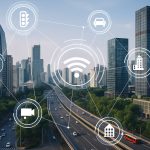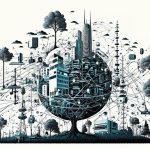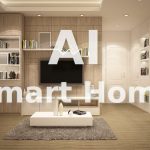We often think of innovation as loud and flashy—flying cars, robot assistants, and tech that looks like it came straight out of a sci-fi movie. But in reality, the most profound changes often happen quietly. That’s exactly what’s going on with IoT-connected devices. They’re slipping into homes, businesses, and cities with little fanfare, yet they’re fundamentally changing the way we live.
What Are IoT-Connected Devices, Exactly?
Let’s start with the basics. IoT stands for the Internet of Things—a vast web of physical devices that are connected to the internet and capable of collecting, sharing, and acting on data. Think smart thermostats, wearable health trackers, voice assistants, security cameras, even your refrigerator. If it connects to the internet and “talks” to other devices, it’s part of the IoT family.
These devices don’t just collect data—they learn from it, respond to it, and often operate with minimal human input. That’s the magic.
Everyday Uses That Feel Like Magic
Here’s where it gets interesting. Most of us are already using IoT-connected devices, whether we realize it or not.
1. Smart Homes That Think for You
From adjusting your lights based on your habits to warning you when you’ve left the oven on, smart home devices like Nest thermostats, Amazon Echo, and Philips Hue are more than just gadgets—they’re digital housemates.
2. Health Monitoring, 24/7
Wearables like the Apple Watch or Fitbit are quietly collecting health data, tracking your sleep patterns, heart rate, stress levels, and more. Doctors can now monitor patients remotely, reducing unnecessary hospital visits.
3. Smarter Workspaces
In offices, IoT sensors manage lighting, monitor energy usage, and even alert maintenance teams before something breaks. It’s efficiency on autopilot.
4. Connected Cars
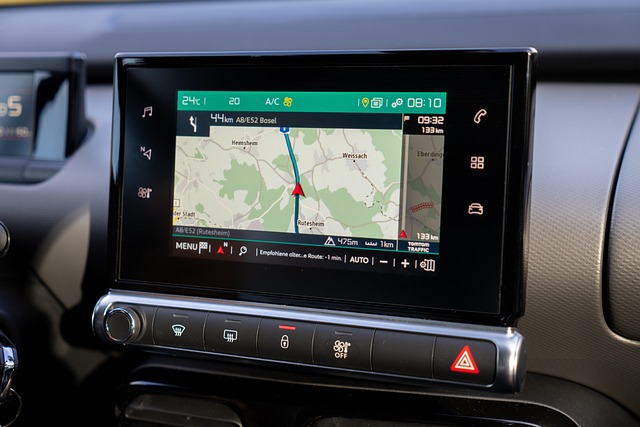
Modern vehicles are essentially computers on wheels. IoT-connected cars monitor tire pressure, detect maintenance needs, and even communicate with other cars or infrastructure to avoid accidents.
Behind the Scenes: The Business Impact
It’s not just individuals who benefit from IoT-connected devices. Entire industries are using them to become faster, leaner, and smarter.
- Retailers use smart shelves and real-time inventory tracking to avoid stockouts.
- Farmers use connected sensors to track soil conditions, irrigation, and livestock.
- Factories rely on IoT for predictive maintenance, reducing costly downtime.
This shift from reactive to proactive systems is transforming traditional industries at their core.
Security: The Double-Edged Sword
Of course, there’s a flip side. More connected devices mean more potential entry points for hackers. Security breaches involving smart baby monitors and home cameras have raised valid concerns.
The good news? Security in IoT is improving rapidly. Manufacturers are implementing stronger encryption, better update mechanisms, and multi-layered security protocols. Still, it’s crucial for users to keep their devices updated and secured with strong passwords.
What’s Next for IoT-Connected Devices?
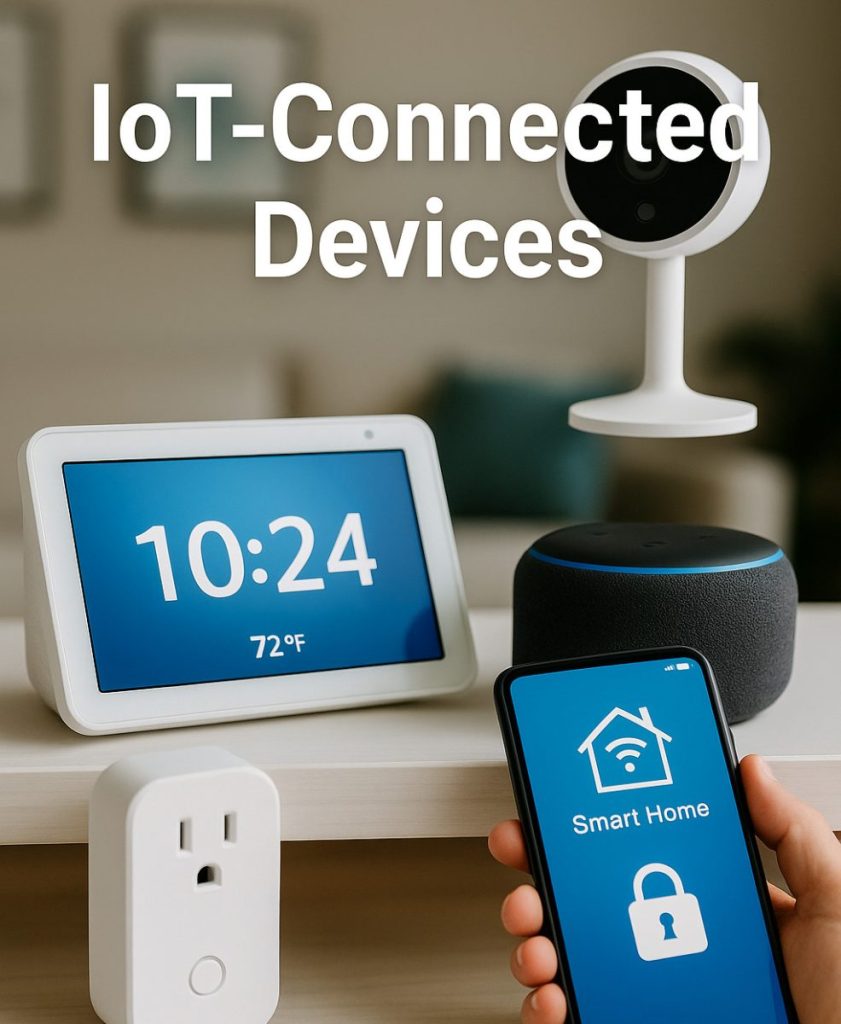
We’re only scratching the surface. As 5G and edge computing become widespread, IoT-connected devices will become even faster, more powerful, and integrated. We’re heading toward a future where devices anticipate your needs before you do—and act on them automatically.
Soon, your coffee machine might start brewing when your fitness tracker senses you’re waking up. Or your car might reroute your morning commute in real-time based on traffic and weather data. It won’t be science fiction. It’ll just be your Tuesday.
Final Thoughts
The rise of IoT-connected devices isn’t about tech for tech’s sake. It’s about convenience, safety, personalization, and efficiency. From homes and health to industries and infrastructure, these devices are weaving themselves into the fabric of our lives—often without us even noticing. And that’s what makes them so powerful.
FAQ: IoT-Connected Devices
What are some common IoT-connected devices?
Smartphones, smartwatches, smart thermostats, connected security cameras, voice assistants (like Alexa), smart TVs, and connected kitchen appliances are all common IoT devices.
How do IoT-connected devices communicate?
They typically use Wi-Fi, Bluetooth, Zigbee, or cellular networks to send and receive data through the internet, often connecting via cloud-based services.
Are IoT devices safe to use?
Most are safe, but like any internet-connected device, they should be updated regularly and protected with strong, unique passwords to avoid unauthorized access.
Can I set up IoT-connected devices without being tech-savvy?
Absolutely. Many devices are designed for easy setup via smartphone apps and include simple instructions for beginners.
OpenDAN: Your Personal Open-Source AI Operating System
- The Role of Linux in IoT: Powering the Connected World
 The Internet of Things (IoT) is everywhere—from smart homes and wearable devices to industrial automation and self-driving cars. Behind the scenes, one operating system plays a surprisingly dominant role: Linux. Known for its stability, flexibility, and open-source nature, Linux has become the backbone of countless IoT devices and platforms. But what makes Linux so well-suited…
The Internet of Things (IoT) is everywhere—from smart homes and wearable devices to industrial automation and self-driving cars. Behind the scenes, one operating system plays a surprisingly dominant role: Linux. Known for its stability, flexibility, and open-source nature, Linux has become the backbone of countless IoT devices and platforms. But what makes Linux so well-suited… - Edge AI vs Cloud AI in IoT: What’s the Difference and Why It Matters
 As the Internet of Things (IoT) expands rapidly across industries, the amount of data generated by sensors, devices, and machines is skyrocketing. To make sense of this data, artificial intelligence (AI) is increasingly deployed in IoT environments. But not all AI is created equal. Two distinct approaches have emerged: Edge AI and Cloud AI. Each…
As the Internet of Things (IoT) expands rapidly across industries, the amount of data generated by sensors, devices, and machines is skyrocketing. To make sense of this data, artificial intelligence (AI) is increasingly deployed in IoT environments. But not all AI is created equal. Two distinct approaches have emerged: Edge AI and Cloud AI. Each… - Smart Cities and IoT: Building Intelligent Urban Futures in 2025
 As cities worldwide face growing populations, environmental challenges, and infrastructure demands, technology offers a path forward. At the heart of this transformation lies the Internet of Things (IoT). Through connected devices, sensors, and intelligent systems, cities are becoming “smart” — improving services, reducing waste, and enhancing citizens’ quality of life. In this article, we’ll explore…
As cities worldwide face growing populations, environmental challenges, and infrastructure demands, technology offers a path forward. At the heart of this transformation lies the Internet of Things (IoT). Through connected devices, sensors, and intelligent systems, cities are becoming “smart” — improving services, reducing waste, and enhancing citizens’ quality of life. In this article, we’ll explore… - Meaning of Internet of Everything (IoE): Examples, and Uses
 The Internet of Everything (IoE) is more than just a tech buzzword—it’s a sweeping transformation of how people, processes, data, and things connect to bring greater value to our lives and industries. While IoT (Internet of Things) refers specifically to interconnected devices, IoE expands this concept to include the human and business aspects that drive…
The Internet of Everything (IoE) is more than just a tech buzzword—it’s a sweeping transformation of how people, processes, data, and things connect to bring greater value to our lives and industries. While IoT (Internet of Things) refers specifically to interconnected devices, IoE expands this concept to include the human and business aspects that drive… - IoT and Renewable Energy: Powering a Greener Future
 As the world transitions toward cleaner energy, the Internet of Things (IoT) is emerging as a powerful ally in building a more sustainable and efficient future. From smart grids to solar panel monitoring, IoT technology is playing a pivotal role in transforming how we generate, store, and consume renewable energy. The Role of IoT in…
As the world transitions toward cleaner energy, the Internet of Things (IoT) is emerging as a powerful ally in building a more sustainable and efficient future. From smart grids to solar panel monitoring, IoT technology is playing a pivotal role in transforming how we generate, store, and consume renewable energy. The Role of IoT in…
